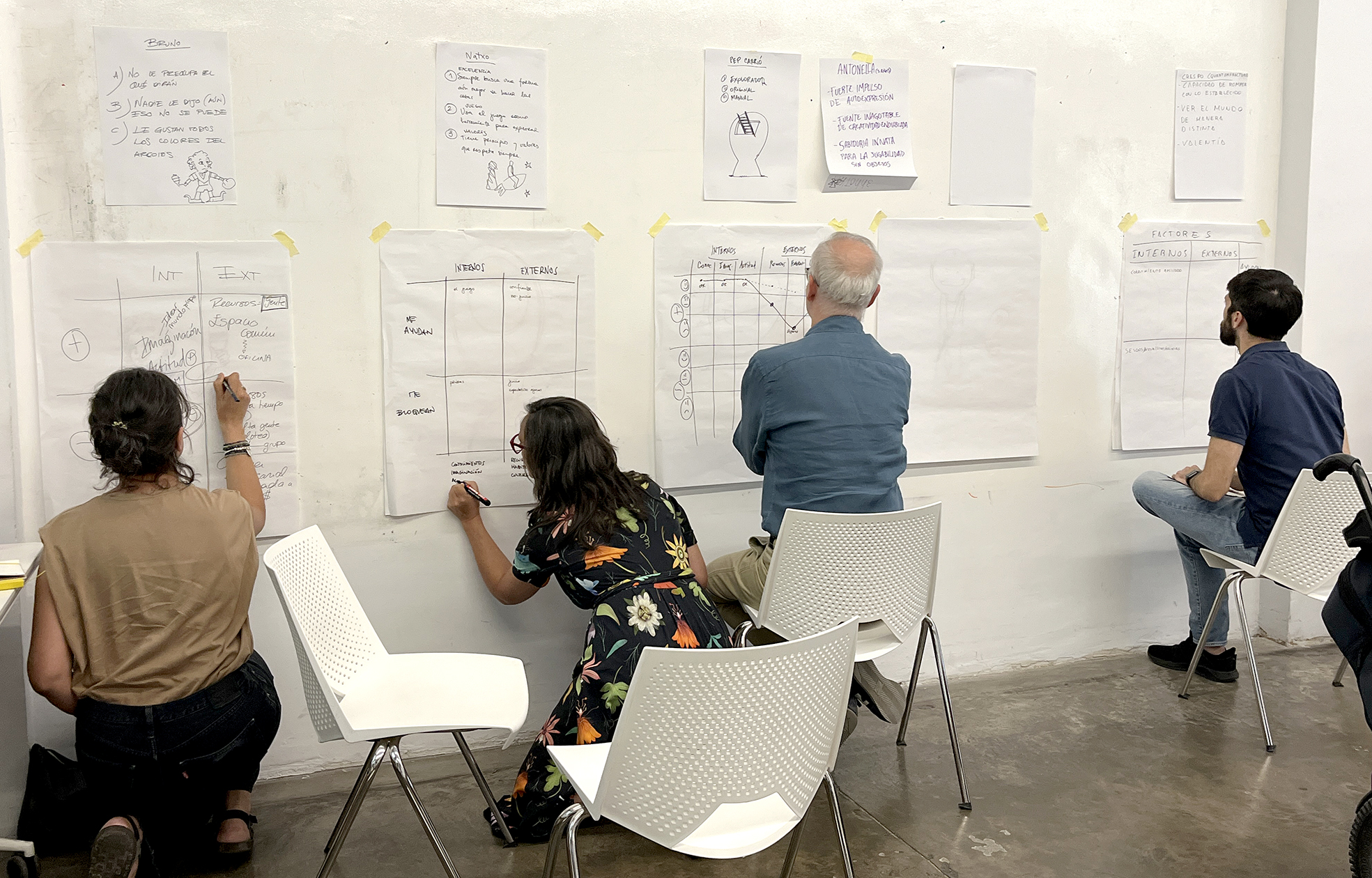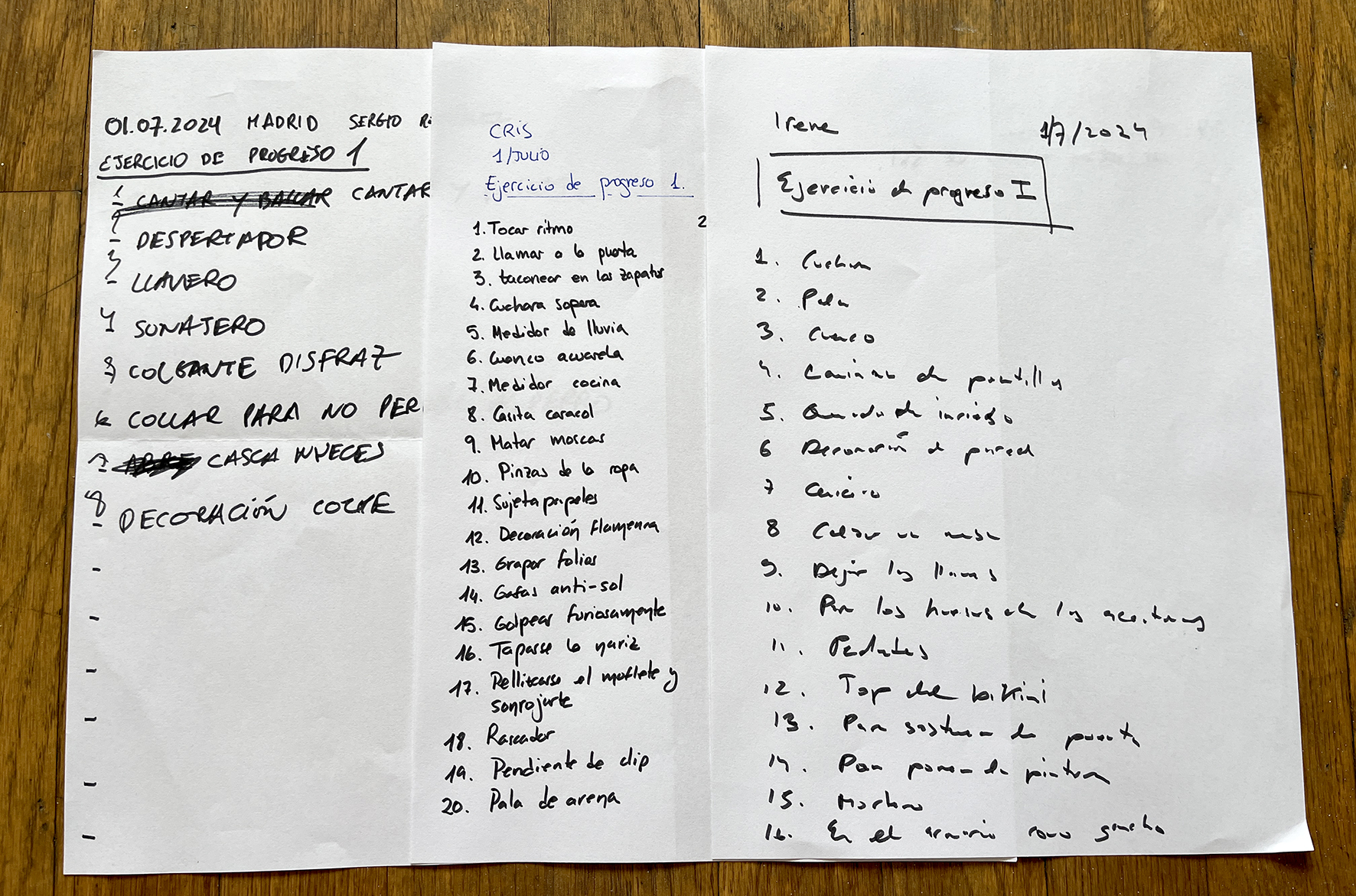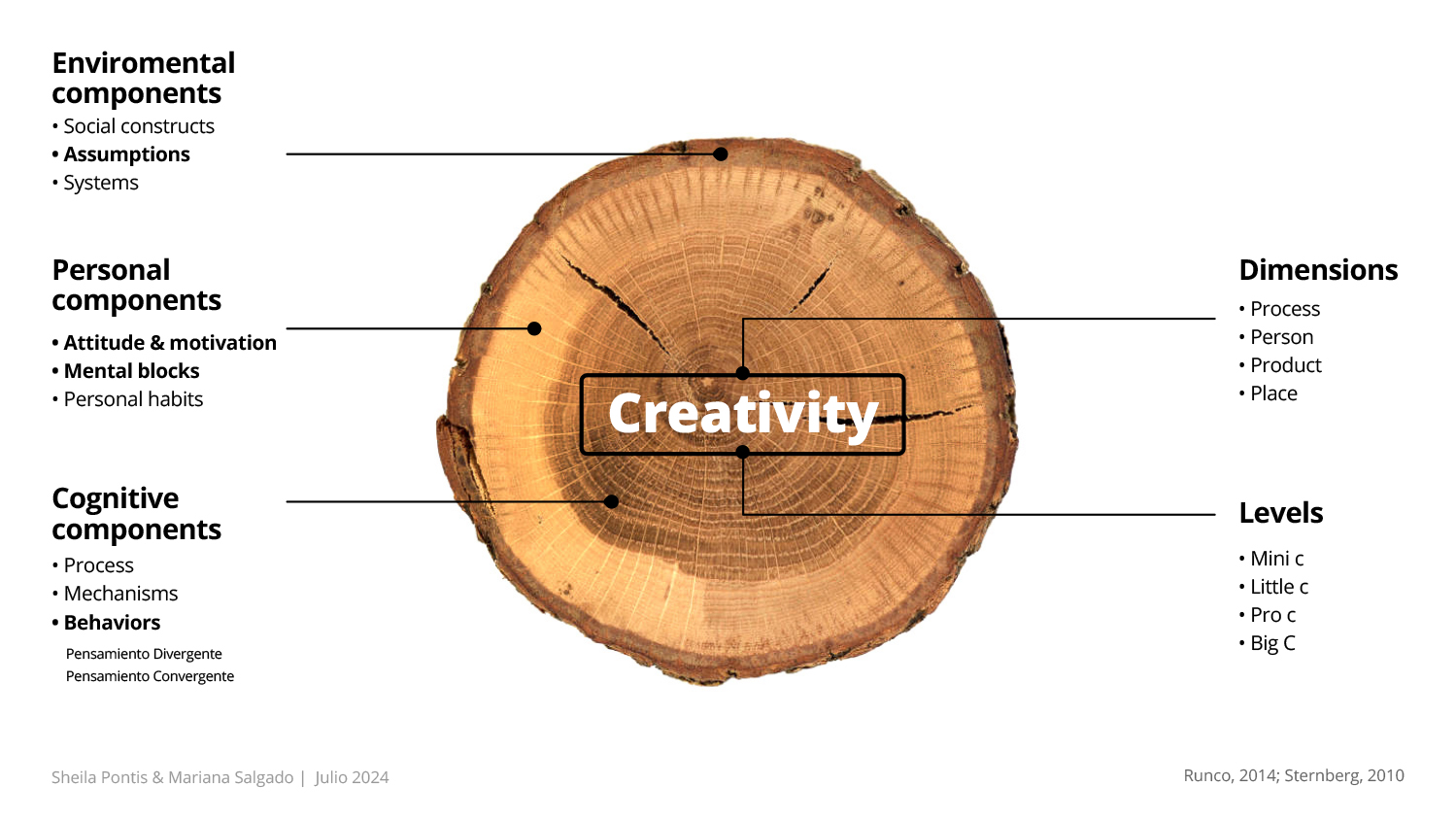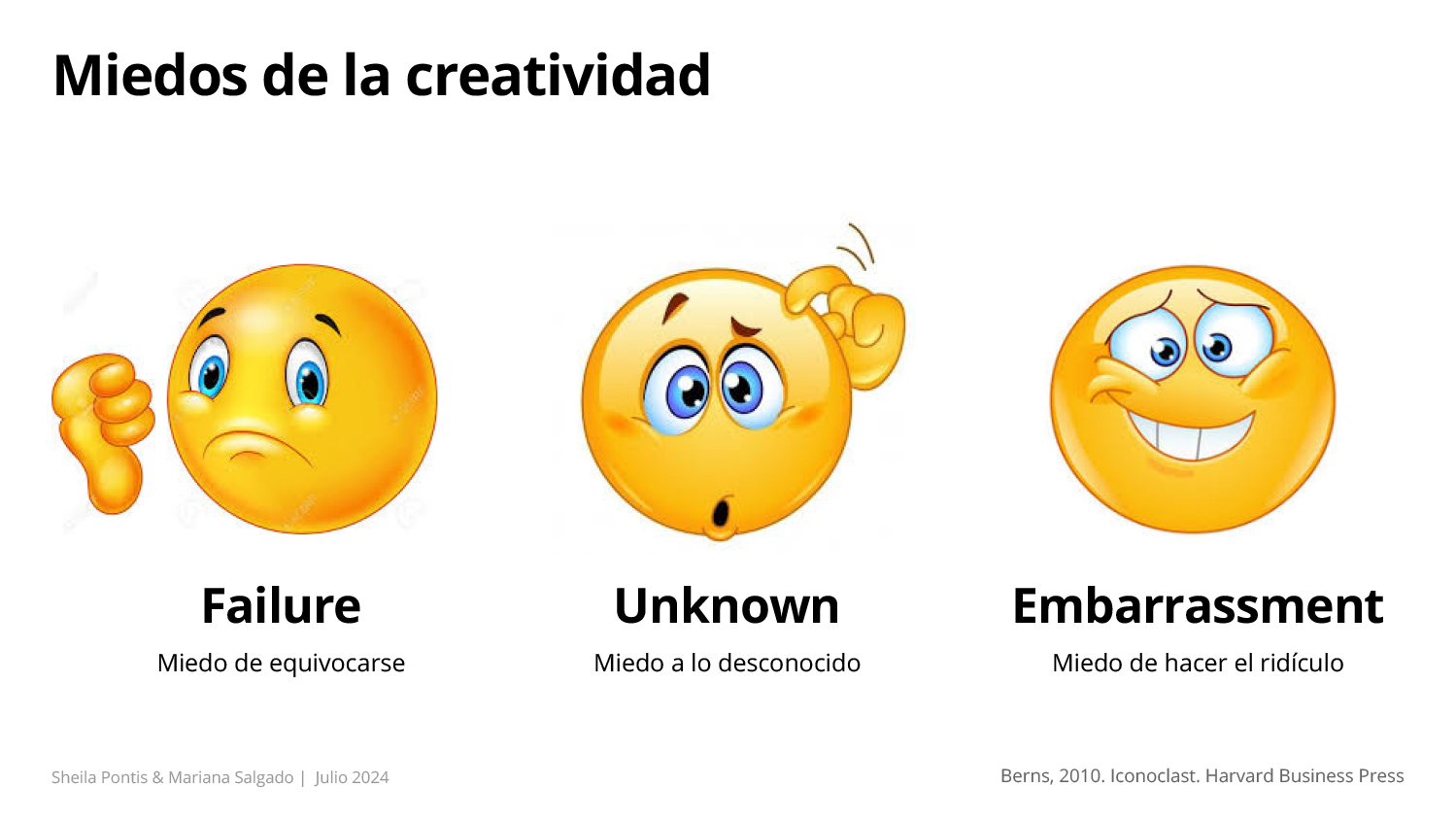The first week of July, I led Deliberate Creativity, a four-day workshop for La Nave Nodriza in Madrid. Here is a summary of the first day flow and activities.
We kicked off the workshop with an introductory warm up: grab an object from a box and introduce yourself using the object to describe something personal about you. Then, we dove into a visual thinking activity. First, individually, participants identified a person who they deemed as creative and list three qualities. Then, in pairs, they synthesized both creative individuals into one drawn silhouette that represented their combined creative qualities (Image 1). This activity opens the door to discuss and define two key concepts: creativity and innovation.
After this, we unravelled the multiple dimensions that impact creativity, including cognitive mechanisms and behaviors (divergent and convergent thinking), personal and environmental components, and four levels: mini c, little c, pro c, and big C.

Using Tina Seelig’s Innovation Engine components, the last activity of the day invited participants to reflect and examine their own internal and external factors that nurture and hinder their creative potential. For that, they created a basic 2×2 chart to analyze the impact of internal factors – attitude, imagination, knowledge – and external factors – culture, resources, habitat – on their creativity. Importantly, participants were reassured that they wouldn’t have to share the analysis with the group, which helped them go even deeper and start learning things about themselves that they didn’t know before. Sometimes, the simplest exercises are the most effective ones, as all we need is to look at things from a different perspective.

As in most of my courses, building on George Land’s study, we ended the day with a divergent thinking exercise called “Many uses,” which is based on the alternate use task (AUT) exercise created by Guilford et al. (1960). We asked participants to think of in three minutes, as many different uses as possible of a given well-known object: wooden castanets. This exercise helps determine participants’ creativity baseline and track the impact of the workshop as we repeat the exercise at the end of the workshop to assess the creative evolution.
—
Guilford, J. P., Christensen, P. R., Merrifield, P. R., & Wilson, R. C. (1960). Alternate uses manual. Mind Garden. Park: Menlo.




Leave a Reply